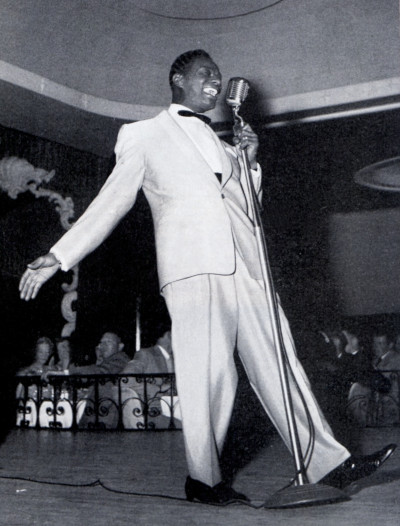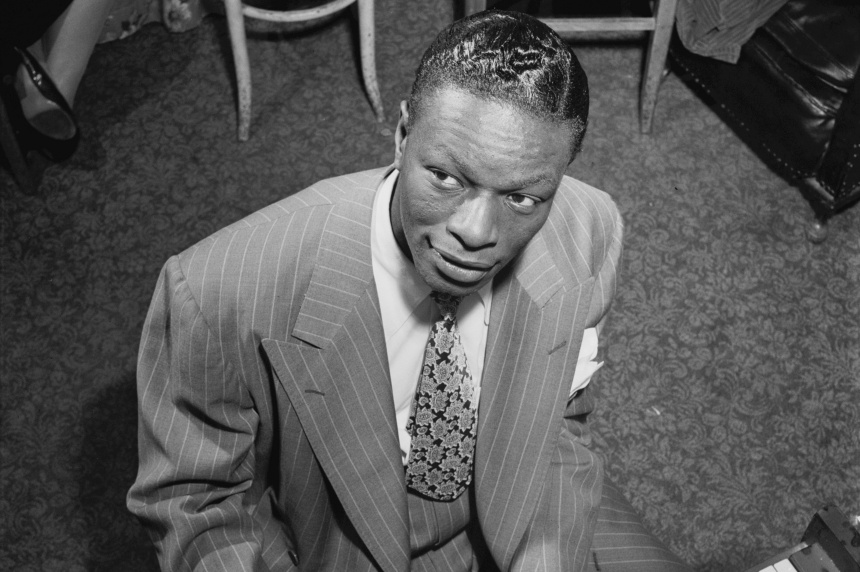–This is an excerpt from the article, “$12,000-a-Week Preacher’s Boy” by Richard G. Hubler, originally published in The Saturday Evening Post on July 17, 1954
Probably no one except Nat King Cole himself will ever realize how much it has cost him to achieve his success. When the singer, in 1947, bought a pricey, ivy-covered, Tudor brick mansion in Hancock Park, one of the most exclusive residential districts of Los Angeles, the homeowners rose in unison against this “invasion.” Signs reading GET OUT were posted nightly on the lawn. More than 100 lawsuits were threatened by neighbors. A hastily organized property owners’ association offered to buy the house from Cole. The real-estate brokers who sold it to Cole were threatened and requested police guards.
Guards were also posted at the house until Cole complained about it. Cole remained unperturbed on the surface. He issued a statement: “I would like to meet all my new neighbors and explain the situation to them. My bride and I like this house. We can afford it and we’d like to make it our home.”

The story got headline play in the Negro press and in the Deep South.
“There was more sand raised in the newspapers than there was here,” Cole says. “Some people threw rocks on the lawn and someone shot through a window, but I think that was a mistake.”
The only time that he met the lawyer for the other property owners, the latter told him sternly, “Mr. Cole, we want you to understand our position. We — er — well, we don’t want any undesirable people coming into this neighborhood, you know.”
“Neither do I,” Cole said mildly. “If I see anybody undesirable coming in here, I’ll be the first to complain.”
Cole still lives in the disputed house. He claims his relations with his neighbors are now excellent. “Everybody makes too much of these things,” he says, “but I guess I’m a symbol to a lot of people.”
—“$12,000-a-Week Preacher’s Boy” by Richard G. Hubler, July 17, 1954
This article is featured in the July/August 2021 issue of The Saturday Evening Post. Subscribe to the magazine for more art, inspiring stories, fiction, humor, and features from our archives.
Featured image: Nat King Cole (Gottlieb, William P. Portrait of Nat King Cole, New York, N.Y., ca. June. United States, 1947. , Monographic. Photograph, Library of Congress)
Become a Saturday Evening Post member and enjoy unlimited access. Subscribe now




Comments
Mr. Cole cleverly knew how to turn things around when he stated, “Neither do I” when told by the other property owners they didn’t want “undesirables” coming into the neighborhood.